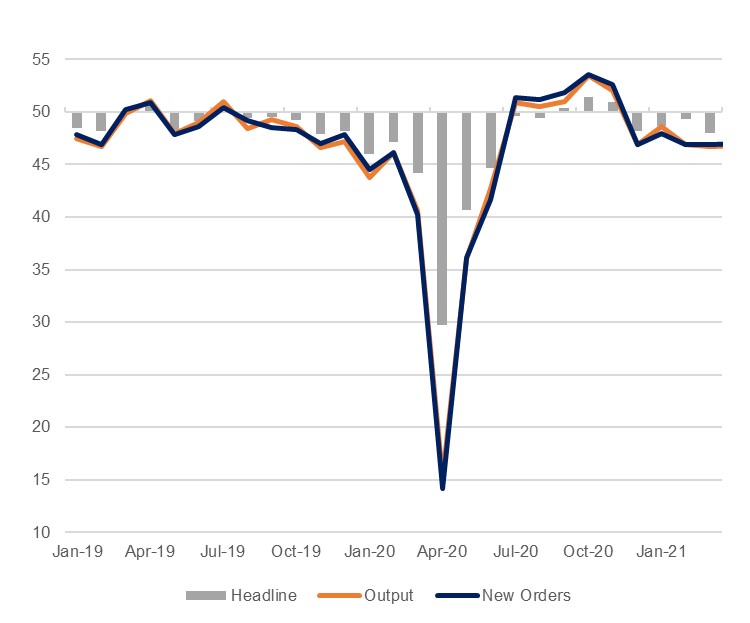
Egypt’s headline PMI reading came in just short of the neutral level in June, hitting 49.9, compared with the previous month’s 48.6. This was the strongest reading since November last year, which was the last time the index was in expansionary territory. The improvement in June was fairly broad based, with a modest expansion recorded in output and new orders for the first time in seven months. This improvement has been in large part predicated upon an easing of restrictions related to the coronavirus pandemic, with a number of respondents citing improving tourism and external demand which helped to boost new orders – export orders recorded a third consecutive month of positive readings.
 Source: IHS Markit, Emirates NBD Research
Source: IHS Markit, Emirates NBD Research
We would expect that there will be an ongoing improvement in the tourism sector through the second half of the year which should help to keep these metrics in positive territory, thereby contributing to our 5.1% real GDP growth forecast for 2021/22 (compared with our estimate of 2.7% growth in the fiscal year just ended on June 30). According to tourism minister Ghada Shalaby, there were 3.5mn visitors to Egypt in H1 calendar 2021, and while improving, this remains far off the pre-pandemic norm (there were 5.0mn arrivals in the corresponding period in 2018). Shalaby anticipates that H2 should see a 45%-60% y/y rise in visitors as global travel restrictions ease, and while the spread of new Covid-19 variants remains a challenge, the trend for the time being is for a gradual resumption of international travel.
Business optimism did slip slightly in the June PMI survey, but it remained substantially above the series average as firms anticipate an ongoing easing of the coronavirus crisis. This will be supported by the government increasing the capacity constraints on hospitality venues from 50% to 70% at the start of July. The seven-day moving average of new coronavirus cases in Egypt has fallen to just 241, the lowest level since November last year, but the sluggish roll-out of the vaccination programme so far does pose a residual risk to the recovery.
As seen throughout the regional PMIs this month, global trends of rising commodity prices and disruption to shipping led to a rise in purchase prices in Egypt also, taking the component to the highest in nearly two years. No firms surveyed reported a fall in prices and they also had to contend with higher labour costs as the staff costs sub-index posted a fourth consecutive month of expansion. Only 4% of firms passed these costs on to consumers, and output prices accelerated at the slowest pace since March. Nevertheless, potential pass-through to CPI inflation over the coming months makes any further rate cuts by the CBE in this cycle unlikely. CPI inflation ticked up to 4.8% in June, compared with4.1% in May, and with attention focused on the risk of developed market tightening and its effect on emerging markets, the likelihood is that the central bank will err on the side of caution and look to maintain its real interest rates. The next MPC meeting is scheduled for August 5.